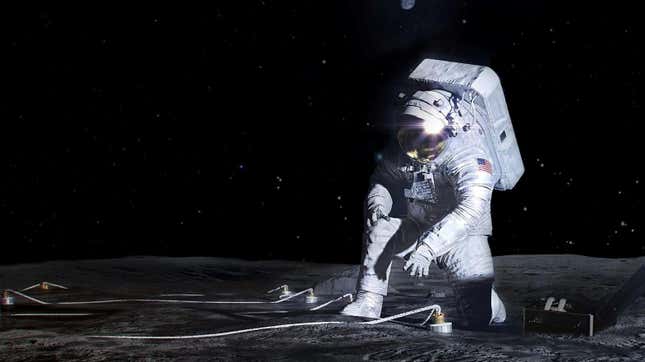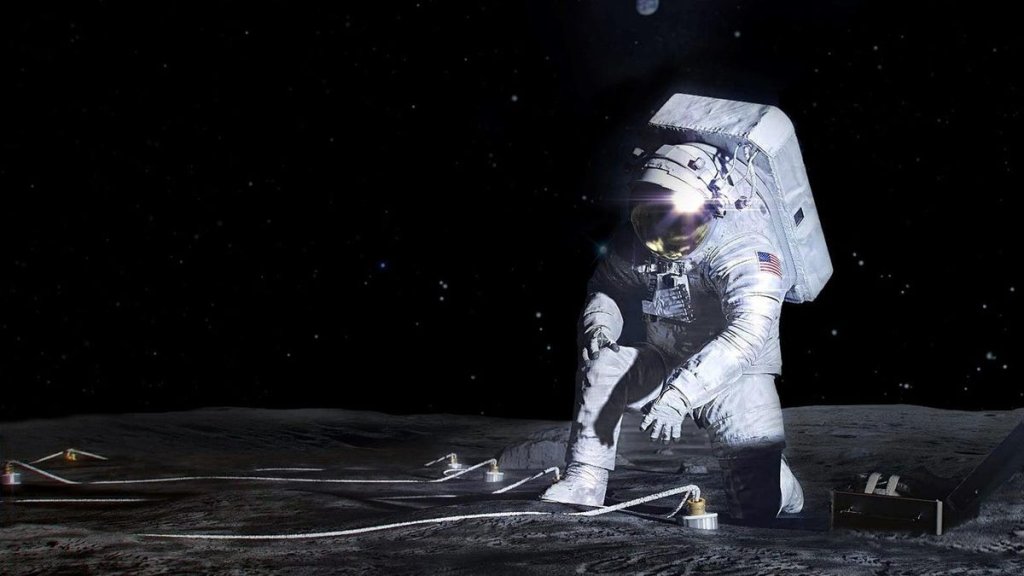
The Artemis 3 astronauts will be the first to walk on the surface of the Moon in more than 50 years, unlocking a new era of lunar exploration. NASA has chosen just the right tools for the astronauts to use, designed to test the feasibility of a long-term human presence on the Moon.
NASA has revealed the first science instruments that its Artemis astronauts will pack to the Moon and deploy at the lunar south pole. The three tools were selected for the Artemis 3 mission, which is set to launch in September 2026, specifically because they require humans to install them.
Artemis 3 will be the first time astronauts land on the Moon since the days of Apollo, and the chosen tools represent the technological advancement that’s been brewing over the past 52 years. “With these innovative instruments stationed on the Moon’s surface, we’re embarking on a transformative journey that will kick-start the ability to conduct human-machine teaming—an entirely new way of doing science,” NASA Deputy Administrator Pam Melroy said in a statement. “These three deployed instruments were chosen to begin scientific investigations that will address key Moon to Mars science objectives.”
Among the newly announced tools is the Lunar Environment Monitoring Station (LEMS), which, according to NASA, is a “compact, autonomous seismometer suite designed to carry out continuous, long-term monitoring of the seismic environment.” In other words, it’s a gadget to sniff out moonquakes. By gathering data on ground motion, scientists hope to better understand the structure of the lunar crust and mantle, and how the Moon formed and evolved over time.
An experiment called Lunar Effects on Agricultural Flora (LEAF) will study the potential of growing crops on the Moon to aid with astronaut nutrition and life support. LEAF represents NASA’s “first experiment to observe plant photosynthesis, growth, and systemic stress responses in space-radiation and partial gravity,” the space agency wrote. China did something similar back in 2019, when its miniature biosphere experiment sprouted a single cotton seed while on the lunar surface.
Related article: A seed has sprouted on the Moon for the first time
Finally, there’s the Lunar Dielectric Analyzer (LDA), which will measure the ability of the lunar regolith to propagate an electric field. It’ll also search for possible signs of frost and ice deposits. Water is obviously crucial for sustaining life during long-term missions—and not only for quenching thirst. Water could conceivably be used to generate oxygen (for supporting agriculture) and for the manufacturing of fuel.
“These three scientific instruments will be our first opportunity since Apollo to leverage the unique capabilities of human explorers to conduct transformative lunar science,” Joel Kearns, deputy associate administrator for exploration in NASA’s Science Mission Directorate, said in a statement. “These payloads mark our first steps toward implementing the recommendations for the high-priority science outlined in the Artemis III Science Definition Team report.”
Artemis 3 will land on the Moon’s south pole, an area that is yet to be explored by humans and contains permanently shadowed regions where there may be pockets of water ice beneath the surface. Aside from the potential of finding precious lunar resources on the south pole, it also presents a unique opportunity to uncover the origin story of Earth’s natural satellite.
Want to know more about humanity’s next giant leap in space? Check out our full coverage of NASA’s Artemis Moon program, the new Space Launch System (SLS) rocket and Orion spacecraft, the recently concluded Artemis 1 mission around the Moon, the four-person Artemis 2 crew, NASA and Axiom’s Artemis Moon suit, and the upcoming lunar Gateway space station. And for more spaceflight in your life, follow us on X and bookmark Gizmodo’s dedicated Spaceflight page.

